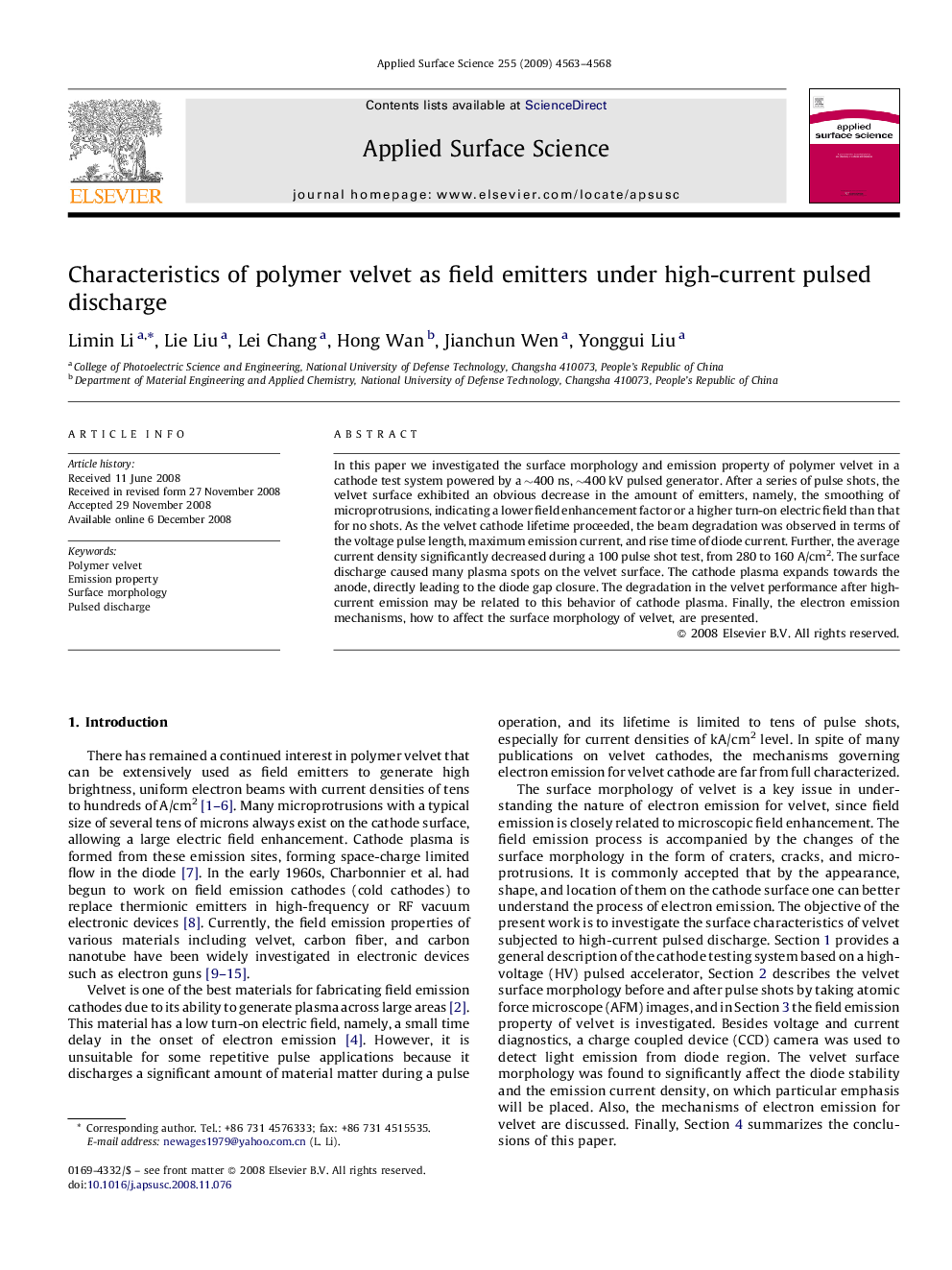| Article ID | Journal | Published Year | Pages | File Type |
|---|---|---|---|---|
| 5360183 | Applied Surface Science | 2009 | 6 Pages |
Abstract
In this paper we investigated the surface morphology and emission property of polymer velvet in a cathode test system powered by a â¼400Â ns, â¼400Â kV pulsed generator. After a series of pulse shots, the velvet surface exhibited an obvious decrease in the amount of emitters, namely, the smoothing of microprotrusions, indicating a lower field enhancement factor or a higher turn-on electric field than that for no shots. As the velvet cathode lifetime proceeded, the beam degradation was observed in terms of the voltage pulse length, maximum emission current, and rise time of diode current. Further, the average current density significantly decreased during a 100 pulse shot test, from 280 to 160Â A/cm2. The surface discharge caused many plasma spots on the velvet surface. The cathode plasma expands towards the anode, directly leading to the diode gap closure. The degradation in the velvet performance after high-current emission may be related to this behavior of cathode plasma. Finally, the electron emission mechanisms, how to affect the surface morphology of velvet, are presented.
Related Topics
Physical Sciences and Engineering
Chemistry
Physical and Theoretical Chemistry
Authors
Limin Li, Lie Liu, Lei Chang, Hong Wan, Jianchun Wen, Yonggui Liu,
